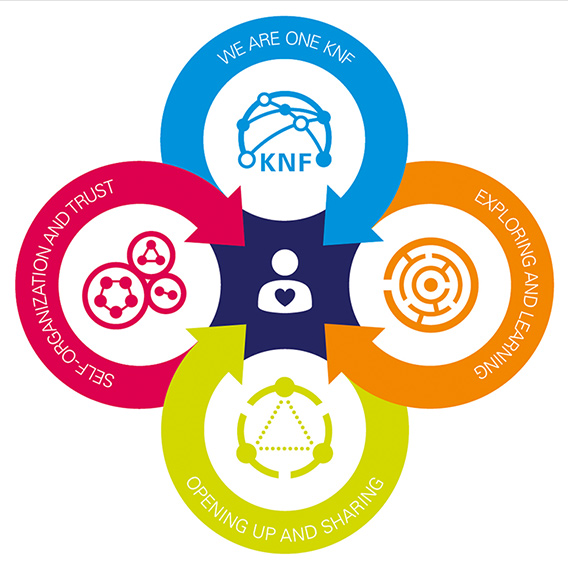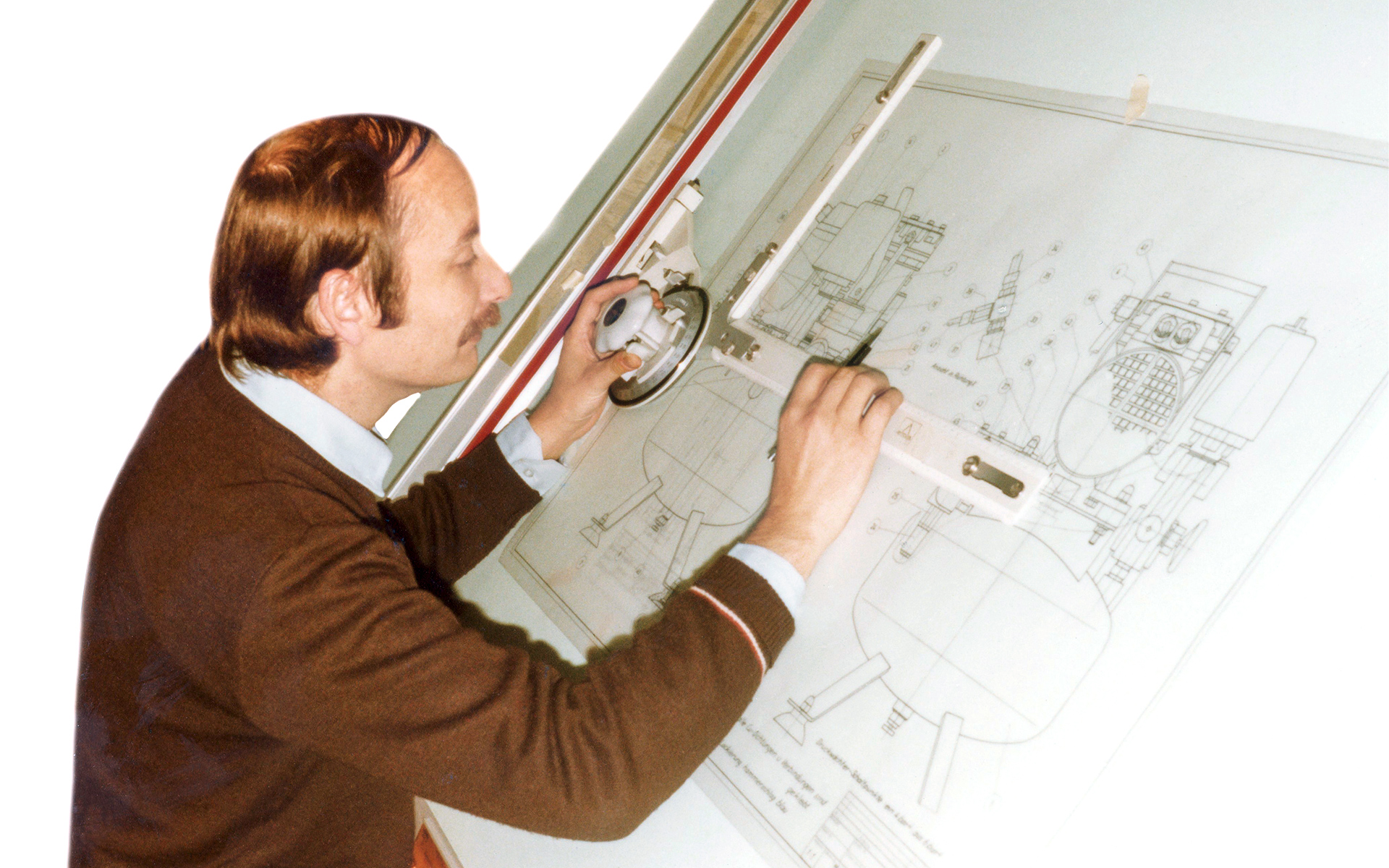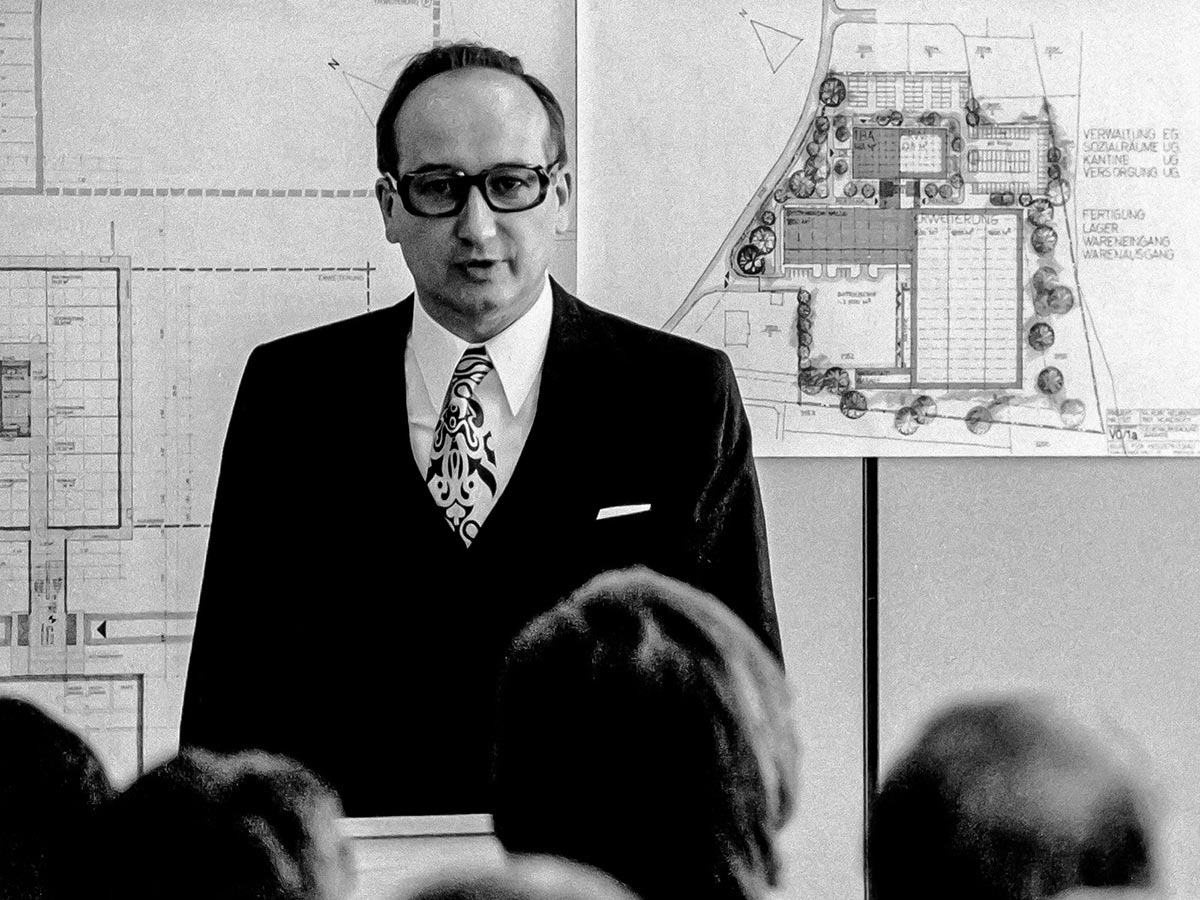Technology Through the Ages
From a mountain of paper to the cloud

Not all that long ago, KNF’s most important company data were stored in paper documents and folders as well as inside its employees’ heads. It was only following the introduction of electronic data processing (EDP) from the mid-1970s that paper-based filing systems – which differed from company to company and could sometimes be very difficult to grasp – gradually began to be phased out. At KNF, the arrival of the first computers mark a huge milestone in the company’s history.
In the mid-1970s, KNF switches to a computerized system, and the first PC arrives at the start of the 1980s. KNF’s capacity planning Excel spreadsheet is a true masterpiece and stays a fundamental part of business operations for many years. Electronic data processing means the start of a new era and gradually changes operational processes. Before this transition, a lot of tasks have to be performed by hand. For example, all name plates are produced using an old Olympia typewriter and all the pump product data is stored in a filing cabinet. Each pump has its own green folder, which contains handwritten notes and additional sheets of information stapled to the original document. Production orders are written on a board with a time schedule and little yellow cards. The launch of the modern EDP system puts an end to much of this repetitive, time-consuming administrative work and boosts efficiency across the company.
Today, KNF has a global enterprise resource planning platform, which is accessible to all production facilities and sales centers. The SAP system keeps processes running efficiently and ensures visibility between KNF and its customers as well as internally between the various departments and companies within the KNF Group. These days, production numbers are automatically updated and whenever stock is running low it is automatically added to a suggested order list. This is a luxury that staff could only have dreamed of when they were still having to write out lists of quantities by hand as recently as in the 1990s.
A similar story is playing out in production. While communications, information and data processing are coming on in leaps and bounds, KNF itself keeps developing rapidly – from an operation that is characterized by its craftmanship into an industrial company at the cutting edge of technology. KNF buys its first CNC machine, which marks another important milestone, in 1989.
Today, KNF is hardly recognizable from what it was in the early 1970s. Wall charts, piles of handwritten notes, computers that take up entire rooms and even the famous green folders have long since disappeared, as have clacking typewriters, printers churning out mountains of paper and wood lathes. Technological progress brings about continuous change, some visible and some invisible. Today, 3D printing is in the process of becoming an established means of manufacturing prototypes, tools and equipment. Meanwhile, the digital transformation of the family-owned company is ongoing in the background. The resulting increase in efficiency is creating capacity for what really matters – personal contact between customers and staff as well as the development of new ideas, solutions and strategies. After all, specialist knowledge and unbeatable quality are what make KNF stand out as a technology leader.



